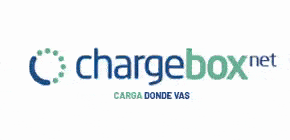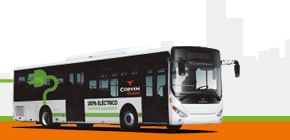The uptake of electric buses has been limited by the significant reduction in revenues to public transport-based municipalities due to the pandemic. The «good news» is that the economic advantage still exists.
Two key factors are the new business models that have begun to be implemented such as the separation of the provision and operation of electric buses, as well as battery leasing. The second advantage is the reduction of fossil fuel and maintenance costs.
«New project financing structures have been successfully tested that allow the initial capital to be amortised with the cash flow generated by the project itself,» say the C40 specialists.
That is why C40 highlights six tips to make the incorporation of electric buses financially viable:
Completely separate the ownership and operation of the buses.
This model has been used in Santiago de Chile and Bogotá. Prior to this, some of the early projects maintained contractual and financial links between the operator and the owner of the units, exposing investors to risk and bankruptcy of the other parties.
To avoid these risks, the parties involved can fully separate the contracts with the municipality and the payments for the operation and provision of the fleet. «This is especially important when private operators have a history of bankruptcies».
Consider creating separate, non-bankrupt trust funds.
These funds help cities take full advantage of the benefits of having separate contracts for fleet operation and fleet provision.
«The funds collect revenues from fare collection and subsidies, and segregate payment streams in advance. A trust fund gives investors confidence that revenues will be managed transparently and independently, and that payments will be backed by a well-capitalised entity, rather than channelled through opaque operators who may have sub-optimal financial management practices.»
A centralised fare collection system should be established.
This will optimise revenue collection for municipal trust funds and is a critical component of any financially viable transit system that seeks to attract outside investors.
By collecting fares directly and centrally rather than relying on operators, municipalities will maximise revenues and avoid the risk of mismanagement.
Structure payment models to protect external parties, such as operators and fleet providers, from demand risk.
In the COVID era, public transport ridership is fluctuating and difficult to predict. While operators have historically been able to absorb fluctuations in passenger demand, they are unlikely to survive the degree of revenue loss that can be expected during the pandemic.
Payments should therefore be indexed to indicators that affect the specific costs of each operator. For operators, a payment model indexed to distance rather than number of passengers carried is much more viable.
For fleet providers, on the other hand, all costs are fixed and payments should be based on specific performance indicators, such as constant availability of buses and reliability of equipment.
Involve an external fleet provider to finance and own the buses and their batteries.
As a relatively new technology, there is little data on the life expectancy and reliability of electric bus powertrains and batteries.
«This is a risk that many municipalities are not prepared to manage, and the involvement of an external fleet provider can help shift this technology risk to the private sector. As professional asset managers, these companies can collect performance data from around the world and secure stronger warranty frameworks from original equipment manufacturers (OEMs) that further mitigate and spread the risk associated with electric bus technology,» says C40.
Create swap lines and use inflation-indexed contracts for fleet suppliers.
Electric buses are typically imported and purchased in hard currency, while transit revenues are earned in local currency. Diesel buses, on the other hand, are usually manufactured locally.
According to the international body, the long-term goal should always be to encourage job creation and local manufacturing of electric buses, but until that happens, foreign exchange risk can be a major barrier to the early adoption of e-buses.
National and municipal governments can address this issue by helping to create currency mitigation options and using inflation-indexed contracts.
It is worth noting that in Latin America, the ZEBRA programme is in place, which has secured commitments from a group of investors to make available more than US$1 billion for well-structured zero emission bus projects in the region.
These investor commitments come from AMP Capital, ARC Global Fund, Ascendal, Ashmore, Copec Voltex, EDP Brazil, Enel X, John Laing, VEMO and VGMobility.





















